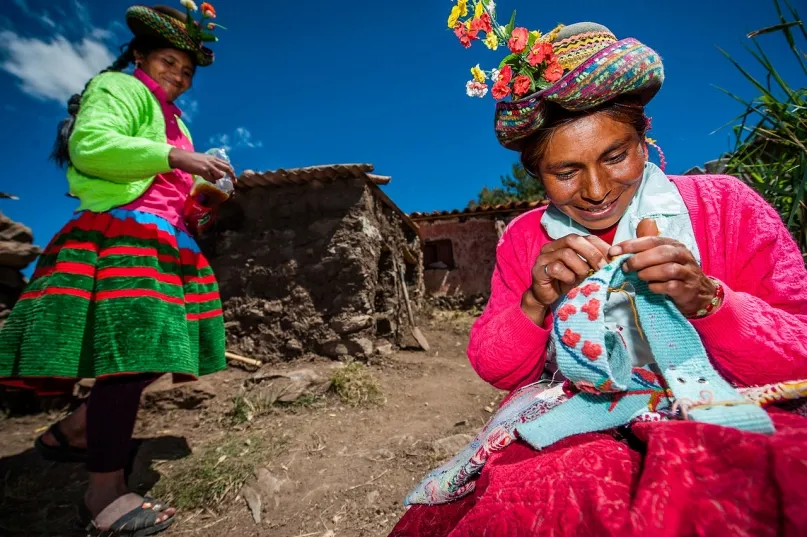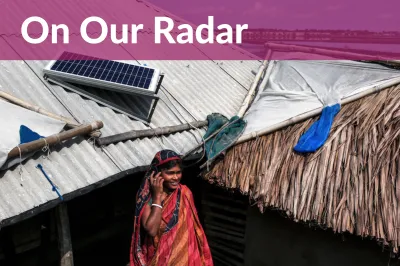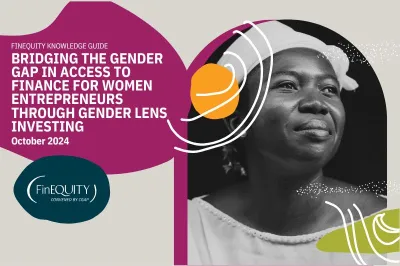Financial Inclusion and Access to Funds to Address Emergencies in LAC

Our ability to deal with unexpected events or emergencies depends on many factors and on our ability to mobilize different types of capital — level of wealth, connection with support networks, access to assets, financial resources. These factors and types of capital are not distributed equitably between men and women, and as a result, many women face greater constraints in dealing with, overcoming and recovering from an emergency. It is precisely for this reason that we need financial tools, both formal and informal, that enable us to address these situations successfully, or at least with lower costs. Taking advantage of the information gathered by Global Findex 2018, we can explore how well prepared women are to address unexpected negative events, and use that as the basis for discussing our options for dealing with the current emergency and the ways in which we could increase the ability to respond to emergencies such as that posed by COVID-19.
Findex asked whether people would have access to an amount (equivalent to 1/20 of the average per-capita income in the country consulted) for dealing with an emergency within the next month. The reference amounts ranged from just over US$100 in Nicaragua to slightly more than the equivalent of US$750 in Uruguay.
“Four out of every 10 Latin Americans would have access to a fund for dealing with an emergency.”
In Latin America and the Caribbean (LAC), 41% of those surveyed responded that they could obtain that amount. In other words, four out of every 10 Latin Americans would have access to a fund for dealing with an emergency. It should be noted that because of the decrease in the region’s economic dynamism, this figure is five percentage points lower than in the 2014 survey (46%).
Those with more resources (50% of the wealthiest 60%) indicate greater access to such emergency funds (of the poorest 40% of respondents, only 26% would have access to such funds). Not surprisingly, 50% of men reported having access to this type of emergency fund, while only 33% of women said the same. This represents a gap of 17 percentage points between men and women in LAC.
“Fifty percent of men report having access to emergency funds, while only 33% of women said the same. This represents a gap of 17 percentage points between men and women in LAC.”
At the global level, 54% of those surveyed said they could get access to funds for dealing with an emergency, and the gap between men (59%) and women (50%) was 9 percentage points. In LAC, we have less access to such funds, but above all, there is a substantially greater gap between the options that women and men have for dealing with unexpected and adverse situations.
Figure 1: Percentage of people who indicate they have access to funds for dealing with an emergency
Source: Global Findex 2018
Where to obtain resources for an emergency
In the region, there are three main possible sources of these funds: 17% said they would fall back on their savings to obtain the indicated amount (18% of men, 15% of women); 33% said that relatives and friends would help them with funds; and 32% said they would work more to obtain the necessary amount. In addition, 11% said they would ask for a loan, and 4% said they would sell something, while a smaller percentage would seek funds from other sources.
Resorting to savings to deal with an emergency, which would seem to always be the logical first option, is mentioned relatively rarely in LAC (17%, compared to 33% globally). This undoubtedly reflects the fact that levels of savings are low and highly variable. In this there is little difference between men and women. We all save little.
Counting on our social networks, friends and relatives is much more important for the inhabitants of LAC. One-third responded that this would be their source of resources for an emergency, but the figure was much higher among women. Some 27% of men identified social networks, friends and relatives as their source of emergency funds, compared to 41% of women. The opposite was true of the option of turning to the labor market to obtain extra income, a choice of the majority of men (38%), but only one-fourth of women (25%).
"Some 27% of men identified social networks, friends and relatives as their source of emergency funds, compared to 41% of women "
In an emergency such as that resulting from COVID-19, where we all simultaneously face the consequences of an unexpected event, it is highly probable that the option of turning to networks of family and friends will be very limited (they are dealing with the same emergency), and labor markets — especially those related to extra, temporary work — are at a standstill in many countries in the region.
For this reason, in the face of unexpected and massive negative events (covariates, as economists would say), access to financial services —formal or informal —becomes crucial for dealing with the emergency. Only 11% of Latin Americans said they would seek a loan to deal with an emergency, and as we noted above, 17% would fall back on their savings. In both cases, the gender gap is minimal or favors women (in several countries, a larger percentage of women than men said they would ask for a loan), even though women have fewer sources and lower levels of income.
“Access to the financial system, to credit (from any source) and to savings in general should provide security in the face of emergencies. These options for access to funds through financial intermediation seem to present smaller gender gaps than other alternatives.”
The following figure shows that access to sources of funds for emergencies is not directly related to having a savings account or even with having some savings (probably because the amount saved is insufficient). In many countries, there are higher percentages of people with an account and/or savings than people who are sure they would be able to deal with an emergency. This must change. Access to the financial system, to credit (from any source), and to savings, in general, should provide security in the face of emergencies. These options for access to funds through financial intermediation seem to present smaller gender gaps than other alternatives.
Figure 2. Access to emergency funds and having savings
Source: Global Findex 2018
Financial inclusion must be expanded, precisely because of its potential for offering tools that eliminate differences between men and women. Now more than ever, achieving universal inclusion in the financial system — in the broadest sense — must be a priority. Financial inclusion is an essential service, particularly for women who now face this massive emergency. There is much to be done, and it is time to do it!


